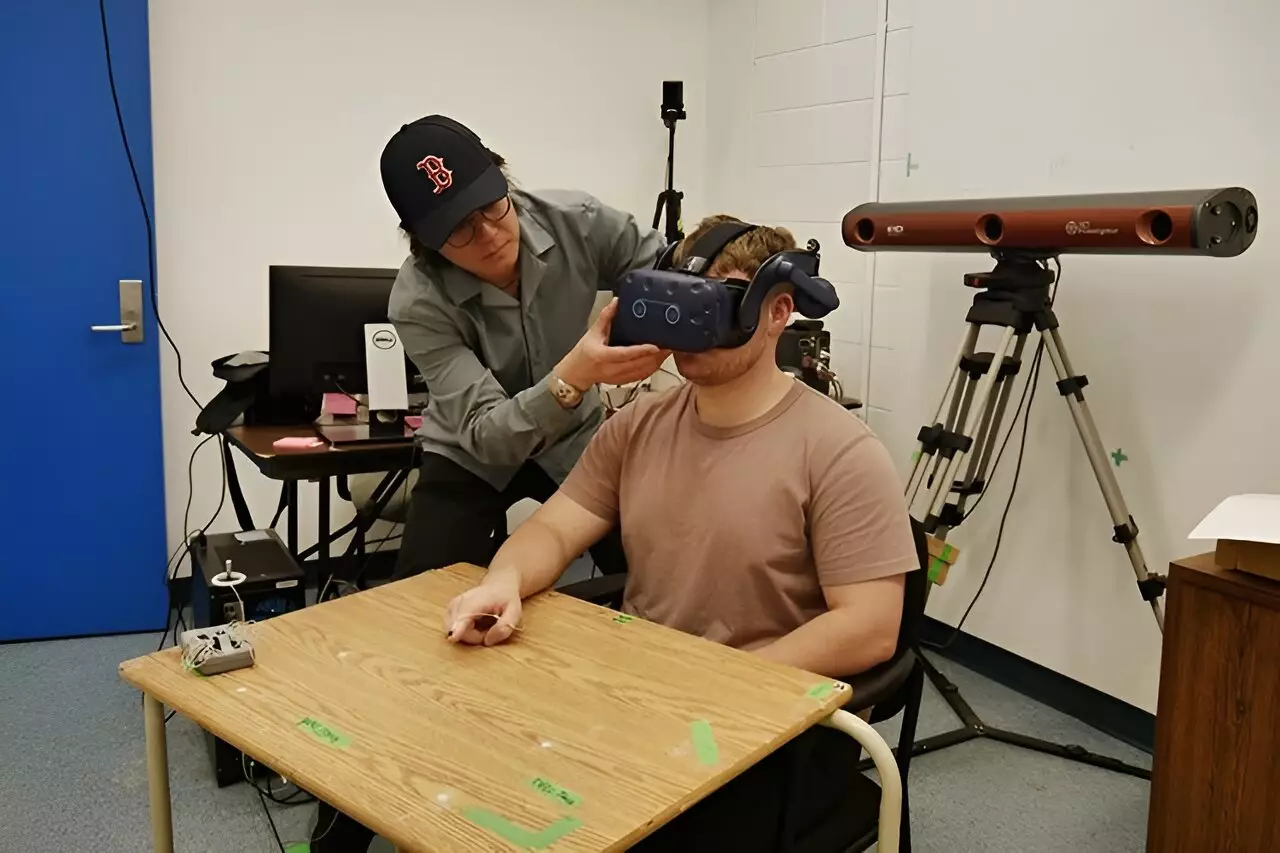Virtual and augmented reality (VR and AR) technologies have become increasingly popular in various industries for training purposes. A recent study conducted by researchers at the University of Toronto has shed light on the effects of using VR and AR on real-world performance. The study, published in the journal Scientific Reports, revealed some surprising findings that have implications for how these technologies are used in training programs.
One of the key findings of the study was that using VR and AR can lead to changes in how people perceive and interact with the real world. Participants who used VR tended to undershoot their targets, while those who used AR tended to overshoot their targets. These changes in movement patterns were noticeable immediately after using VR or AR but gradually disappeared as participants readjusted to real-world conditions.
The researchers were particularly surprised by two findings. First, they discovered that movement patterns learned in VR and AR environments transferred to real-world movements. This suggests that the way our brains and bodies adapt to digital environments can affect our ability to move and interact with real objects. Secondly, the researchers found that the effects of AR wore off more quickly compared to VR. This could be because people in AR can still see and interact with their actual surroundings, which helps them maintain a more accurate sense of depth and distance.
The differences between VR and AR highlighted in the study have important implications for training programs that use these technologies. As more industries adopt VR and AR for skill development, it is essential to understand how these technologies might affect real-world performance. For example, training programs for surgeons, pilots, or even everyday skills like driving could be impacted by the limitations and effects of VR and AR. Knowing these limitations can help ensure that these technologies are used effectively and safely.
The researchers plan to further explore how different types of VR and AR experiences, such as more complex or immersive scenarios, affect real-world performance. They are also interested in investigating how training duration and individual differences, such as prior experience with these technologies, influence adaptation and readjustment. This research will help in designing VR and AR systems that minimize negative after-effects and maximize their potential for training and skill development.
The study conducted by researchers at the University of Toronto has provided valuable insights into the impact of VR and AR on real-world performance. The findings suggest that using these technologies can temporarily alter movement patterns, which can have implications for various industries that rely on VR and AR for training purposes. By understanding the limitations and effects of VR and AR, training programs can be designed to maximize their effectiveness and safety. Further research in this area will help in improving the design of VR and AR systems for training and skill development.


Leave a Reply